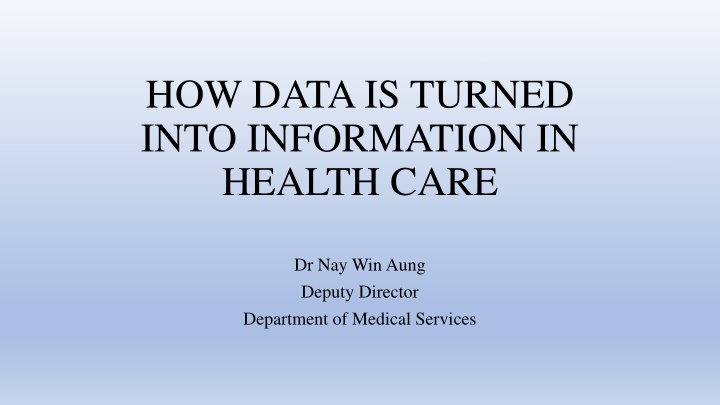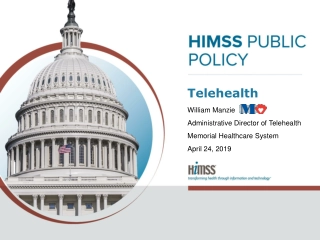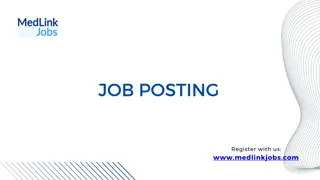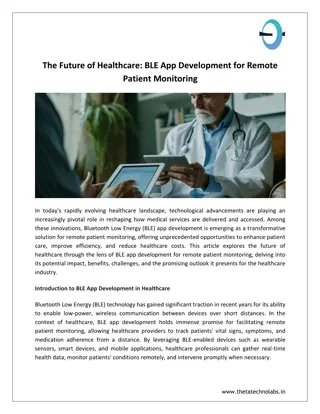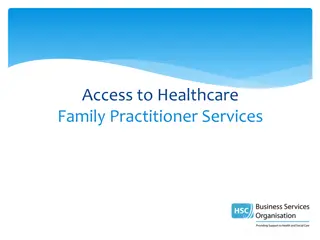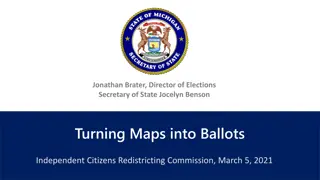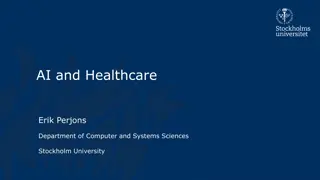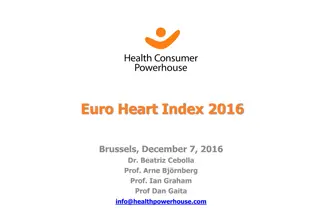Turning Data into Healthcare Information
Health care organizations are collecting vast amounts of patient data and turning it into actionable information to improve patient care, population health, and healthcare system efficiency. The journey from raw data to meaningful insights is essential in today's healthcare landscape, where data deluge poses challenges and opportunities. Types of healthcare data range from clinical and claims data to genomic, environmental, social determinants of health, and behavioral data.
Download Presentation

Please find below an Image/Link to download the presentation.
The content on the website is provided AS IS for your information and personal use only. It may not be sold, licensed, or shared on other websites without obtaining consent from the author.If you encounter any issues during the download, it is possible that the publisher has removed the file from their server.
You are allowed to download the files provided on this website for personal or commercial use, subject to the condition that they are used lawfully. All files are the property of their respective owners.
The content on the website is provided AS IS for your information and personal use only. It may not be sold, licensed, or shared on other websites without obtaining consent from the author.
E N D
Presentation Transcript
HOW DATA IS TURNED INTO INFORMATION IN HEALTH CARE Dr Nay Win Aung Deputy Director Department of Medical Services
Health care organizations are collecting and storing large volumes of patient data. Information is when you take the data you have and process and interpret it to transform that data into something you can use to make a decision. So the next step is turning data into information that can be used to help patients.
What data are you capturing? What are you missing? Are you integrating your data ? Where it needs to be integrated? How are you reporting it ? How are your end-users actually leveraging those reports both in the workflow and afterwards?
In today's healthcare landscape, data is king. But raw data alone is not enough. We need to be able to transform that data into meaningful information that can be used to improve patient care, population health, and the efficiency of the healthcare system. This presentation will explore the journey from data to information in healthcare, highlighting the challenges and opportunities along the way.
The Data Deluge The amount of healthcare data is growing exponentially, driven by factors such as the adoption of electronic health records (EHRs), wearable devices, and genomics. This data deluge presents both challenges and opportunities. It can be overwhelming to manage and analyze all of this data. On the other hand, it has the potential to revolutionize healthcare by providing us with new insights into disease, treatment, and prevention.
Types of Healthcare Data There are many different types of healthcare data, including: Clinical data: This data comes from EHRs and includes information such as diagnoses, medications, allergies, and lab results. Claims data: This data comes from insurance companies and includes information about the services that patients receive and the costs associated with those services. Genomic data: This data includes information about a patient's genes.
Environmental data: This data includes information about a patient's environment, such as air quality and water quality. Social determinants of health data: This data includes information about factors such as a patient's income, education, and social support network. Behavioral data: This data includes information about a patient's lifestyle choices, such as diet and exercise.
The Challenge of Data Integration Healthcare data is often siloed in different systems, making it difficult to integrate and analyze. This can lead to incomplete and inaccurate information, which can hinder decision-making. One of the biggest challenges in healthcare data analytics is data integration. Healthcare data is often stored in different systems, such as EHRs, claims databases, and public health databases. This can make it difficult to get a complete picture of a patient's health. In addition, data standards are often inconsistent, which can further complicate data integration.
Data Cleaning and Preparation Before data can be analyzed, it must be cleaned and prepared. This involves identifying and correcting errors, such as missing data, inconsistencies, and outliers. Data cleaning and preparation is an essential step in the data analytics process. It ensures that the data is accurate and complete, which is essential for producing reliable results.
Data Collection Sources of Data: Collect data from various sources, including Electronic Health Records (EHRs), medical devices, wearables, and patient surveys. Structured and Unstructured Data: Gather both structured data (numerical values, categorical information) and unstructured data (text notes, medical images).
Data Preprocessing: Cleaning and Quality Check: Remove inconsistencies and errors in the data. Validate data accuracy and completeness. Normalization: Standardize data formats and units for consistency.
Data Integration: Combine Diverse Data Sources: Integrate data from different healthcare systems and departments. Ensure interoperability for seamless data exchange.
Data Storage: Database Management: Utilize secure and scalable databases to store healthcare data. Implement appropriate security measures to protect sensitive information.
Data Analysis: Descriptive Analytics: Summarize and describe historical healthcare data to identify patterns and trends. Predictive Analytics: Use statistical models and machine learning algorithms to forecast future health outcomes. Prescriptive Analytics: Recommend specific actions based on analysis for improved patient care.
Machine Learning and AI: Predictive Diagnostics: Develop models for early disease detection using patient data. Treatment Personalization: Tailor treatment plans based on individual patient characteristics. Outcome Prediction: Anticipate patient outcomes and optimize care plans.
Data Visualization Graphs, Charts, and Dashboards: Present healthcare data in visually accessible formats. Use data visualization tools to communicate insights effectively. Heatmaps and Geographic Information Systems (GIS): Visualize spatial patterns in health data for targeted interventions.
Data Governance Establish Policies and Procedures: Define guidelines for ethical and responsible data use. Data Stewardship: Assign roles to ensure accountability and integrity. Compliance with Regulations: Adhere to healthcare data regulations such as HIPAA and GDPR.
Collaboration and Interdisciplinary Approach: Healthcare Professionals and Data Scientists: Collaborate to derive actionable insights from healthcare data. Interdisciplinary Teams: Combine medical expertise with data analytics for comprehensive understanding.
Real-world Implementation: Case Studies: Implement data-driven healthcare solutions based on successful case studies. Iterative Improvement: Continuously refine processes based on real-world outcomes and feedback.
Emerging Technologies: Artificial Intelligence (AI): Explore AI applications for diagnostics, risk prediction, and personalized medicine. Internet of Things (IoT): Implement IoT devices for remote patient monitoring and continuous data collection. Blockchain: Enhance security and transparency in health data exchange.
Patient Engagement: Access to Health Data:Empower patients with access to their own health information. Encourage active participation in healthcare decision-making.
Evaluation and Feedback: Continuous Monitoring: Regularly assess the impact of data-driven initiatives on patient outcomes and operational efficiency. Feedback Mechanism: Collect feedback from healthcare professionals, patients, and stakeholders for continuous improvement.
